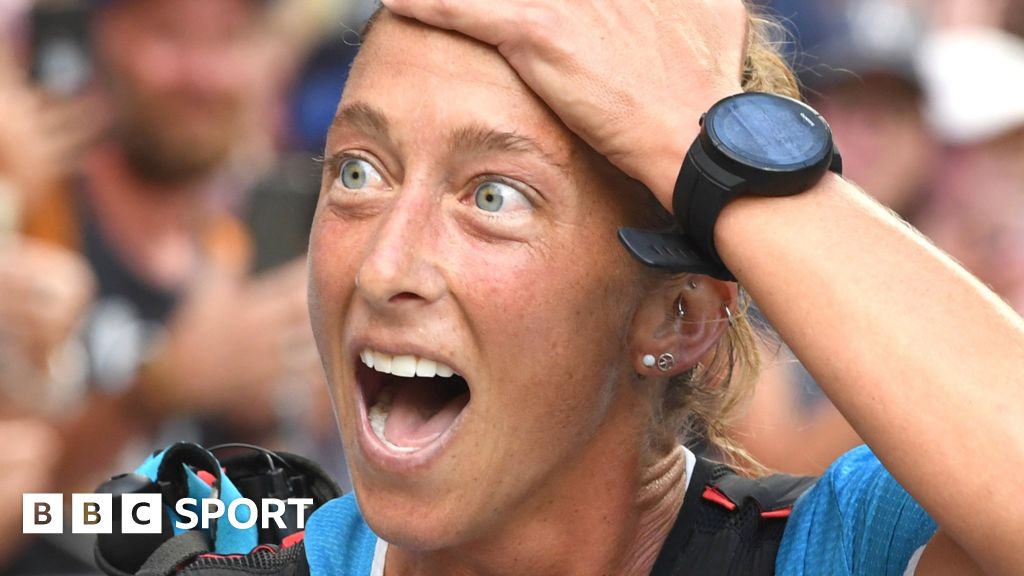
Courtney Dauwalter: Step inside the ‘pain cave’, where rules are remade
- International
- January 18, 2024
- No Comment
- 381
At the start of 2017, before everything changed, running was still a side project for Dauwalter, whose day job was teaching biology full-time in Colorado.
“I majored in biology in college and thought I would do something medical or in sports medicine, but I quickly figured out that that probably wouldn’t be a good fit for me. So after college I decided that teaching would be a cool way to spread my love of science to others,” says Dauwalter.
Throughout school and college, she ran regularly, often starting each day with a morning jog and entering the odd 5km or 10km – simply to have a healthy activity on a Saturday morning.
“I loved how it made me feel. I loved that I could push exactly as hard as I wanted during a race or training, and I loved that feeling of exploration and amazement at where my feet could take me,” says Dauwalter.
She was a four-time Minnesota state champion in Nordic skiing and gained a cross-country skiing scholarship at the University of Denver, but there was little early indication of the extent of her running prowess.
“At the start line of my first marathon, I was texting goodbye to family and friends, saying my legs are going to shatter – I’m going to be a heap on the side of this road somewhere. But I finished it. I couldn’t believe it,” says Dauwalter.
“It triggered this whole domino effect. I thought running a marathon was impossible – but it wasn’t. So I thought, what else is there that could be the same sort of challenge? And that led me to the ultra-running world.”
Her first 50km went well, followed by a successful, albeit exhausting, 50-miler.
“So I decided the next logical step was to try the 100-mile distance.”
The 2012 Run Rabbit Run ended badly. Each person who passed the aid station after Dauwalter had dropped out was a painful reminder of how she had failed at something she had set her mind to, but she now credits it as one of the most important moments in her running career.
“I was officially out of the race, but I had this front-row seat for evidence of what it takes. Look at all of these people who are clearly hurting, but they’re finding a way. I kept asking myself, do you want to be a person who tries this again and figures it out?” says Dauwalter.
What came next was dramatic. For the next four years, she shared her time between teaching and ultra-running. Her results surged, and by 2014, she was dominating, winning seven major 50-mile, 100-mile, or 24-hour races that year.
In 2017, Courtney Dauwalter hit the mainstream. Having quit teaching to run full-time, she delivered two defining performances.
Dauwalter had already returned to win Run Rabbit Run the previous year, finally exorcising the ghost of 2012, but her victory in 2017 is the stuff of absurd legend.
Comfortably leading the race as she entered the last 12 miles, her vision began clouding from the periphery. Temporary distorted vision isn’t unheard of in ultra-running; the stress of running so hard and long can mean the body struggles to refresh the fluid in the eyeball as usual. It is a condition known as corneal edema. But Dauwalter’s case was particularly severe. As she continued towards the finish line, it worsened until she was effectively 90% blind.
“I was all alone on this trail in the Colorado mountains. I couldn’t see my hand in front of my face, but I could still see my toes,” says Dauwalter.
With only a few miles until the final aid station, Dauwalter stumbled along, occasionally falling – on one occasion drawing blood after hitting her head on a rock.
“Luckily, I knew that section of trail; I had run it many times before in training. A calm came over me – a computer mode asking what I could do. Well, I can look at my toes and keep moving forward as best as I can,” says Dauwalter.
“This is my situation – here’s the problem I’ve been dealt with. And then it was just figuring out my options and how to get out of this.”
Dauwalter made it to the aid station, but instead of dropping out, she used a volunteer to guide her by narrating the terrain as they ran. A battered and bleeding Dauwalter crossed the finish line – the first woman to do so that day – in 20 hours 38 minutes 09 seconds,, external with her vision returning to normal five hours later.
That experience would have traumatised many, but just three weeks later, she entered and won the 50-mile Bear Chase in Colorado, beating the nearest man into second place by nearly two hours.
Dauwalter runs with a wide grin and often takes time to chat with volunteers and people along the trail, but competing, never mind winning, over these distances requires something primal. An ability to tame the beast that screams it’s impossible. To keep going when your eyes are failing – when your body is capitulating. Beneath the cheery exterior lies a relentless survivor.
“The number of problems and types of problems you can get in ultra-running are abundant. My process is just to start repeating a positive mantra to myself in my head,” says Dauwalter.
“I think it helps me to just calm down all of my systems. If I have this very simple positive phrase – You’re fine. This is fine. Everything is fine. Keep moving – repeating in my brain, the rest of me can start thinking through what’s going on and what I can do about it.
“Do I have any experience of this sort of thing in the past? What have I tried before? What could I try this time?”
When things really get tough, she uses a mental exercise she calls her ‘pain cave’.
“The pain cave is where I go when it physically feels like I can’t take another step. It’s a visual I have of this space in my brain that I go to with a chisel, and I just go to work on making it bigger, which helps to stay mentally tough in those difficult moments – and makes my capacity for suffering bigger,” says Dauwalter.
“Your brain is so powerful. Figuring out how to use both my body and my brain keeps me signing up for these really tough challenges because I want to keep testing myself.”
#Courtney #Dauwalter #Step #pain #cave #rules #remade








